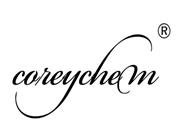| Chemical Properties |
colourless liquid with an aromatic odour |
| Definition |
ChEBI: A formate ester resulting from the formal condensation of formic acid with ethanol. |
| Uses |
As flavor for lemonades and essences; for manufacture of artificial rum and arrack; also as a solvent for nitrocellulose; as fungicide and larvicide for tobacco, cereals, dried fruits, etc.; in organic synthesis. |
| General Description |
A clear colorless liquid with a pleasant odor. Flash point -4°F. Less dense than water. Vapors heavier than air. |
| Air & Water Reactions |
Highly flammable. Soluble in water. Slowly decomposed by water to formic acid, a corrosive material and ethyl alcohol, another flammable liquid. |
| Reactivity Profile |
Ethyl formate is an ester. Esters react with acids to liberate heat along with alcohols and acids. Strong oxidizing acids may cause a vigorous reaction that is sufficiently exothermic to ignite the reaction products. Heat is also generated by the interaction of esters with caustic solutions. Flammable hydrogen is generated by mixing esters with alkali metals and hydrides. Ethyl formate is incompatible with the following: Nitrates; strong oxidizers, alkalis & acids [Note: Decomposes slowly in water to form ethyl alcohol and formic acid.] . |
| Hazard |
Narcotic and irritant to skin and eyes; use in foods restricted to 0.0015%. Highly flammable, dangerous fire and explosion risk. Questionable carcinogen. |
| Health Hazard |
Inhalation of vapor causes slight irritation of the eyes and rapidly increasing irritation of the nose. High concentrations cause deep narcosis within a few minutes followed by death within a few hours. Contact with liquid causes moderate irritation of eyes and mild irritation of skin. Ingestion causes irritation of mouth and stomach; may cause deep narcosis and death if not treated. |
| Fire Hazard |
Behavior in Fire: Vapor is heavier than air and may travel long distance to a source of ignition and flash back. |
| Agricultural Uses |
Fumigant, Insecticide: Used as a fumigant, especially on dried fruit, Also used as a solvent for cellulose nitrate and acetate and in the production of synthetic flavors. Not currently registered for agricultural use in EU countries and the U.S. Used in Australia and there are 63 global suppliers. |
| Safety Profile |
Moderately toxic by ingestion and subcutaneous routes. Mddly toxic by skin contact and inhalation. A powerful inhalation irritant in humans. A skin and eye irritant. Questionable carcinogen with experimental tumorigenic data. Highly flammable liquid. A very dangerous fire and explosion hazard when exposed to heat, flame, or oxilzers. To fight fire, use alcohol foam, spray, mist, dry chemical. When heated to decomposition it emits acrid smoke and irritating fumes. See also ESTERS. |
| Purification Methods |
Free acid or alcohol is removed by standing the ester over anhydrous K2CO3, with occasional shaking, then decanting and distilling from P2O5. Alternatively, the ester can be kept over CaH2 for several days, then distilled from fresh CaH2. It cannot be dried with CaCl2 because it reacts rapidly with the ester to form a crystalline compound. [Beilstein 2 IV 23.] |

 China
China






